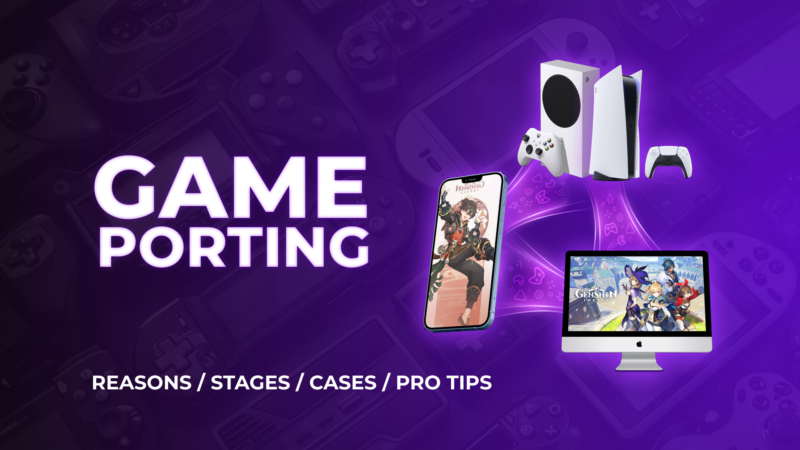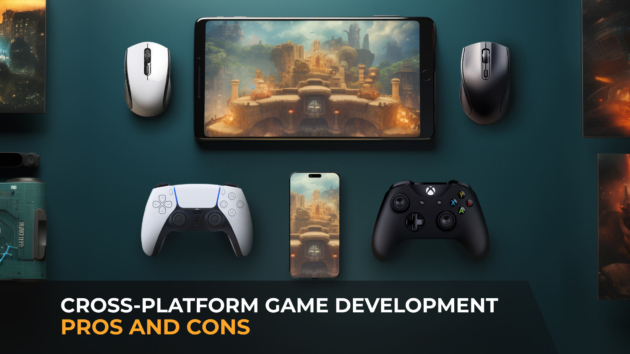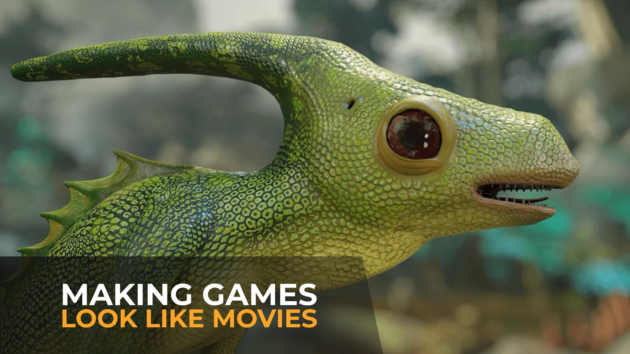The development of a game is its foundation. The final release marks its successful introduction into public use. And as for your digital product’s distribution rates, everybody is used to relying on marketing and ads. Which is why we may easily underestimate one game creation milestone – the choice of compatible platforms.
This is the factor that can make or break your next big game release. And timely, smart video game porting is your best bet in conquering the hearts of demanding, expansive player audiences.
See, the scope of mass recognition for a game largely depends on the way it is presented to the public. In what ways exactly do we get to acquire and play your game? Ultimately, how available and accessible in terms of supported platforms and devices your release actually is?
When done properly, porting maximizes that availability, keeping players satisfied across a bunch of segments. So let’s get into it and figure out the ins and outs of, main approaches to, and real-world instances of porting a game.
What Underlies Porting a Game?
In a nutshell, porting a game means adapting it from one platform to another. It’s like translating a book into different languages to reach a wider audience, really. The primary goal of porting is to make your game playable on not just one but across several devices or operating systems, be it consoles, PCs, mobile devices, or virtual reality (VR) setups, and whatnot.
A video game may initially target a single platform (like PC) or several specific platforms (like PC and certain consoles). In both cases, some major audiences can be left out of the scope of your release. As a result, eager players miss out on a new title, and you miss out on an established player audience to cover, satisfy, and, of course, monetize.
Commonly, many games are launched based on the available resources (for the well-tried, most cost-efficient, or originally selected and prioritized platform) only to get ported once the right time comes.
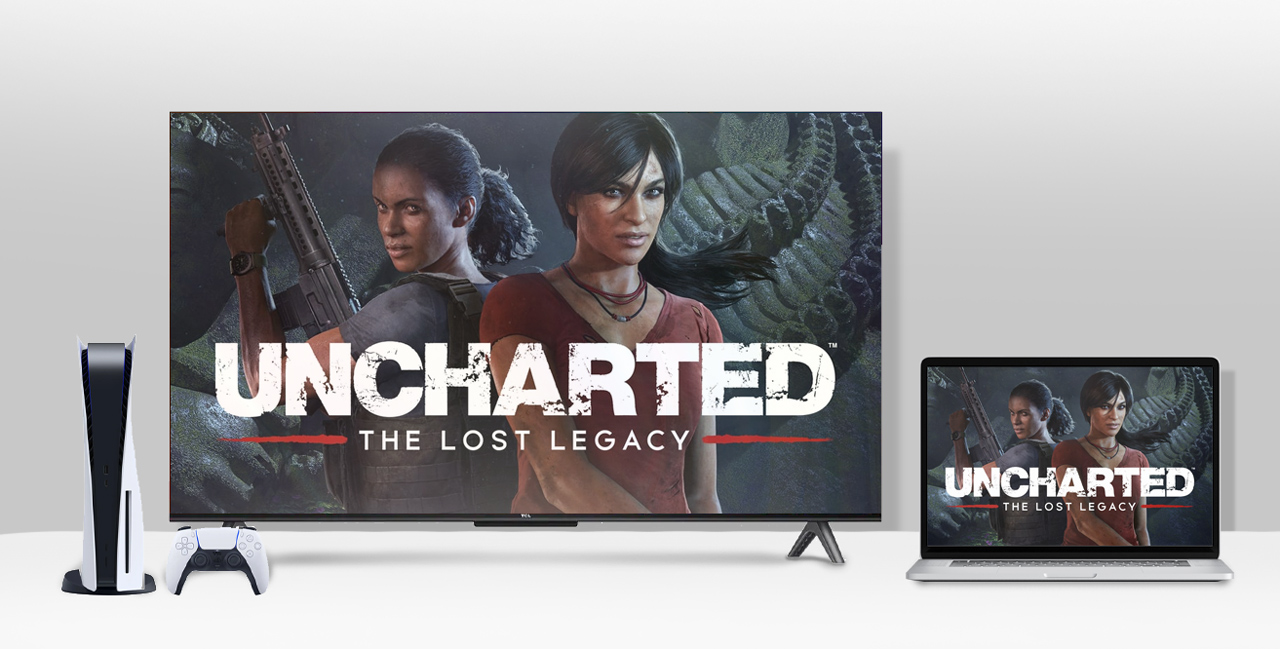
For instance, tons of PC players all over the world had been waiting for decades to get their hands on some PlayStation exclusives without actually having to buy the console(s) (like the Uncharted series, gems like Heavy Rain, and The Last of Us).
How Does Game Porting Work?
Game porting is a very technical process that requires a deep understanding of the target platform’s hardware and software. Porting specialists also require a comprehensive foundation of the game itself to refactor it when and where needed. Developers often have to rework or optimize the game’s code, adjust graphics and controls, and ensure that it all runs seamlessly on the new platform. In essence, it’s like tailoring a suit to fit perfectly on a different mannequin.
But it is easier to visualize the workflow for porting games once than to discuss it in excruciating detail.
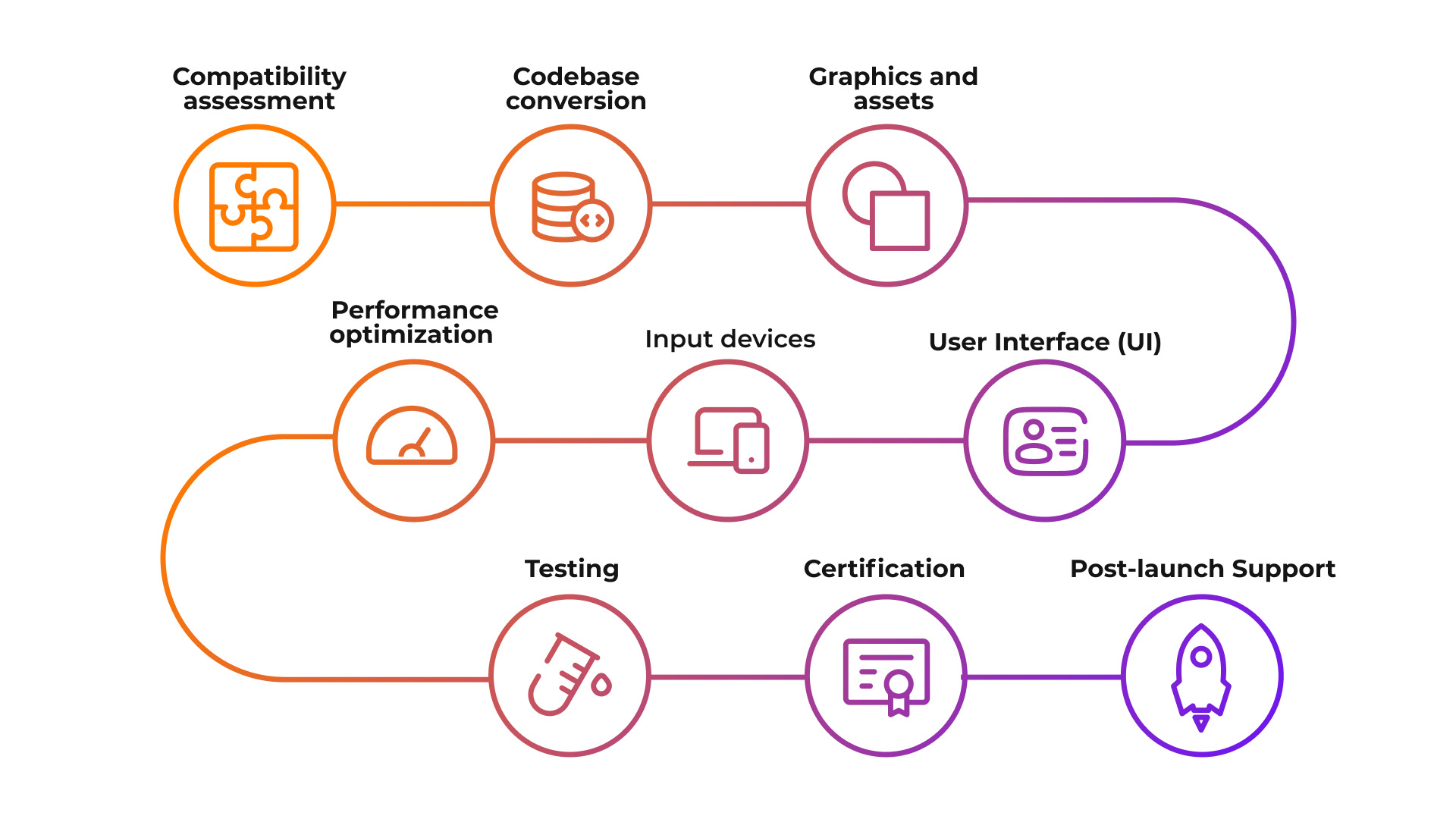
How does the porting happen?
The whole deal is based on a set of major stages, all of which entail a good share of technical work. Let’s start from the top.
Compatibility assessment
Before anything else, your porting experts must help you determine if your game is a good candidate for porting at all. For this, you need to analyze and register your target platform’s hardware capabilities, input methods, and performance expectations.
Codebase conversion
Most games are written in a specific programming language or based on a game engine, which may not be compatible with the new platform. Converting the codebase is often necessary, which is a complex process to be handled by experienced professionals only.
Graphics and assets
Graphics, textures, UI navigation heatmaps, and other visual assets may need adjustment to match the new platform’s capabilities. Right off the bat, resolution, aspect ratio, and other visual elements must be optimized.
User Interface (UI)
The game’s UI often requires a complete overhaul to be functional and user-friendly on the new platform. This includes adapting menus, HUD elements, and controls.
Input devices
Different platforms have different input methods (keyboard and mouse, game controller, touch screen, motion controls, etc.). The game’s controls must be adjusted accordingly, and sometimes this means rethinking gameplay mechanics inside-out.
Performance optimization
To ensure smooth gameplay, you’ll need to optimize performance for the new platform. This includes adjusting graphics settings, reducing load times, and ensuring stable frame rates.
Testing
Rigorous testing is crucial to identify and fix any bugs, glitches, or performance issues that may arise during the porting process. This step is time-consuming but essential.
Certification
Many platforms require games to pass certification processes before they can be released. This includes checking for compliance with platform-specific guidelines and standards.
Post-launch Support
Once your game is live on the new platform, ongoing support is vital. This includes addressing any post-launch issues, releasing patches, and providing customer support.
Why Consider Porting Your Game?
The main question you probably have right now is whether you need to dive into it all without a strict necessity, and what do you get from it all? We may point out the following advantages of having a widely compatible game. So, you can totally go for porting:
To expand audience
Porting allows you to expand onto huge, diverse player bases across different platforms, potentially gaining more player engagement and overall popularity.
To keep the game alive
Instead of leaving an older game to gather dust, porting can breathe new life into it, making it relevant and profitable for years to come and for new generations to explore without issues.
To gain a marketing advantage
The ability to provide your game on multiple platforms is a competitive advantage in and out of itself. General marketing efficiency is only boosted with more coverage.
To boost the revenue
With more players comes the potential for increased revenue through game sales, ads with wider coverage, and more in-game purchases.
Beyond all that, the fact that you are not tied to a single platform helps you minimize the risks associated with platform-specific issues. Such diversification is always long-term profitable and business-pushing.
What Platforms to Consider?
Yet another essential question – what options do we get to port a game? Releasing a game in this day and age, you get to cover a bunch of market-defining platforms. These include:
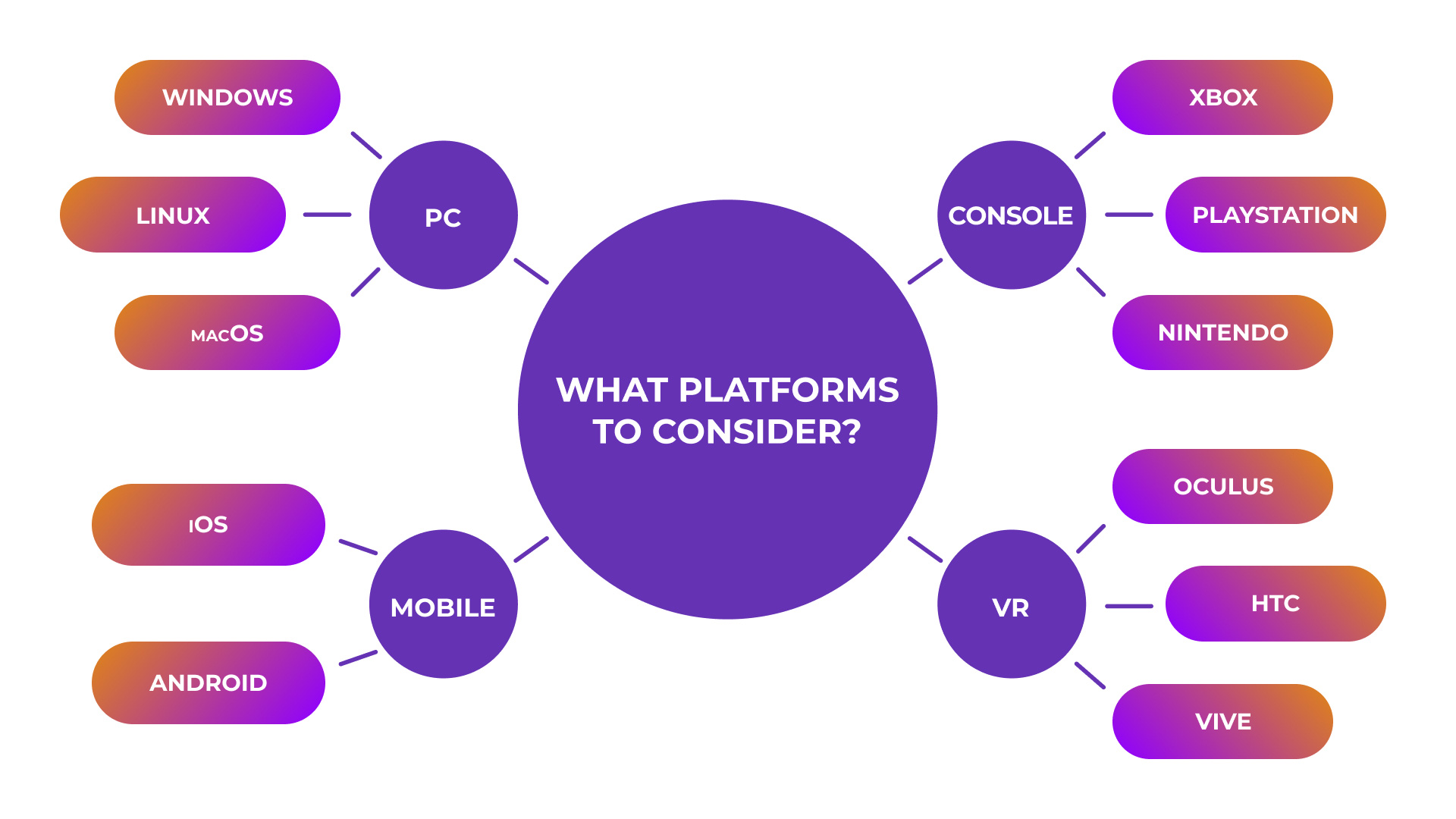
PC (Windows, Linux, macOS)
Having released a console game, porting it to PCs gives you access to a vast and very dedicated gaming community that’s been there for decades. This grants the ultimate opportunity to tap into the established PC gaming market. And many PC gamers are traditionally awaiting new ports (exclusive AAA games are usually released a bit later for PC).
Console (Xbox, PlayStation, Nintendo)
Consoles have very trusty and dedicated fan bases, and porting to these platforms can expose your game to a whole new world of players. Your usual scope of console porting may cover such platforms as PlayStation 4 and 5, Xbox Series S/X, and Nintendo Switch.
Mobile (iOS, Android)
The mobile gaming market is enormous, and porting your game to mobile platforms brings some major revenue potential to the table. Mobile ported games are usually somewhat cut versions of the original (due to mobile device constraints), but seeing the case of recently ported Resident Evil 4 Remake, it is safe to say that we live in times where full-on video games can be migrated to smartphone/tablet screens.
VR (Oculus, HTC Vive)
For a more immersive experience, consider porting your game to VR platforms. This is a way to offer a unique way to engage with your game and tap into the most innovative gaming segment to date.
Challenges
- Development effort (especially when porting to mobile or VR platforms)
- Technical bumps (compatibility issues, performance optimization, and adapting controls)
- Costs
- Meeting user expectations
Most of these challenges can be avoided by teaming up with a trusty porting service provider. Reliable professionals working by your side help to translate all the costs into actual value. The other half can be efficiently tackled with the help of game porting hot tips we provide below. Let’s take a look.
Pro Tips and Advice
Game porting can be a complex process, but with the right approach and some directions, you and your tech partners can navigate it successfully. Here are some hot tips and recommendations for efficient game porting:
- Plan early and thoroughly: Start planning for porting during the initial stages of game development. Consider potential platforms and their technical requirements from the very beginning.
- Optimize your codebase: Write clean and platform-agnostic code to minimize the need for extensive rewrites. Optimize code and basic components for performance to ensure smooth gameplay.
- Prioritize platforms: Console and PC gaming are two distinct niches for gamers coming from different worlds.Consider platform-specific features and gameplay mechanics to tailor the experience exactly for the gamers you target. But don’t forget to leave some space for future porting (e.g., by using hybrid coding tools and widely used languages).
- Stay up-to-date with platform updates: Keep track of platform-specific updates, SDKs, and guidelines. Regularly patch up and update your game to maintain compatibility with evolving platforms.
- Consider localizations: Plan for localization from the start, as different platforms may require specific localization approaches. Make sure all text and descriptive elements can be easily adapted for various regions and languages.
- Integrate gamepad and touchscreen: Implement gamepad support where applicable, but also optimize the game for touchscreen controls if targeting mobile devices. Provide customizable control options to accommodate player preferences on any platform.
- Work through user feedback: Gather feedback from players on each platform to address issues and improve the gameplay experience. Actively engage with the gaming community to identify and resolve platform-specific concerns.
- Prepare for certification: Familiarize yourself and your specialists with platform-specific certification requirements and guidelines.
- Do backups and version control: Implement robust version control and backup systems to safeguard your game’s code and assets. This is especially important when working on multiple platforms simultaneously.
- Documentation: Maintain clear documentation of your game’s code, resources, and porting processes. Such outlines can be invaluable for troubleshooting and future updates.
- Choose the right porting partner: Work only with a porting partner with a proven track record in migrating games to your target platforms.
Remember that successful game porting requires flexibility, adaptability, and a deep understanding of both your game and the platforms you’re targeting. It’s a journey that can be challenging but ultimately rewarding when your game finds success on new platforms and reaches a broader audience.
Industry Cases to Learn From
The Elder Scrolls V: Skyrim
Originally released for PC, Xbox 360, and PlayStation 3, Skyrim was later ported to a bunch of platforms, including Xbox One, PlayStation 4, Nintendo Switch, and even VR platforms.
Bethesda Game Studios ensured the game was optimized for each platform’s capabilities, including graphical improvements and support for unique features like motion controls on the Switch.
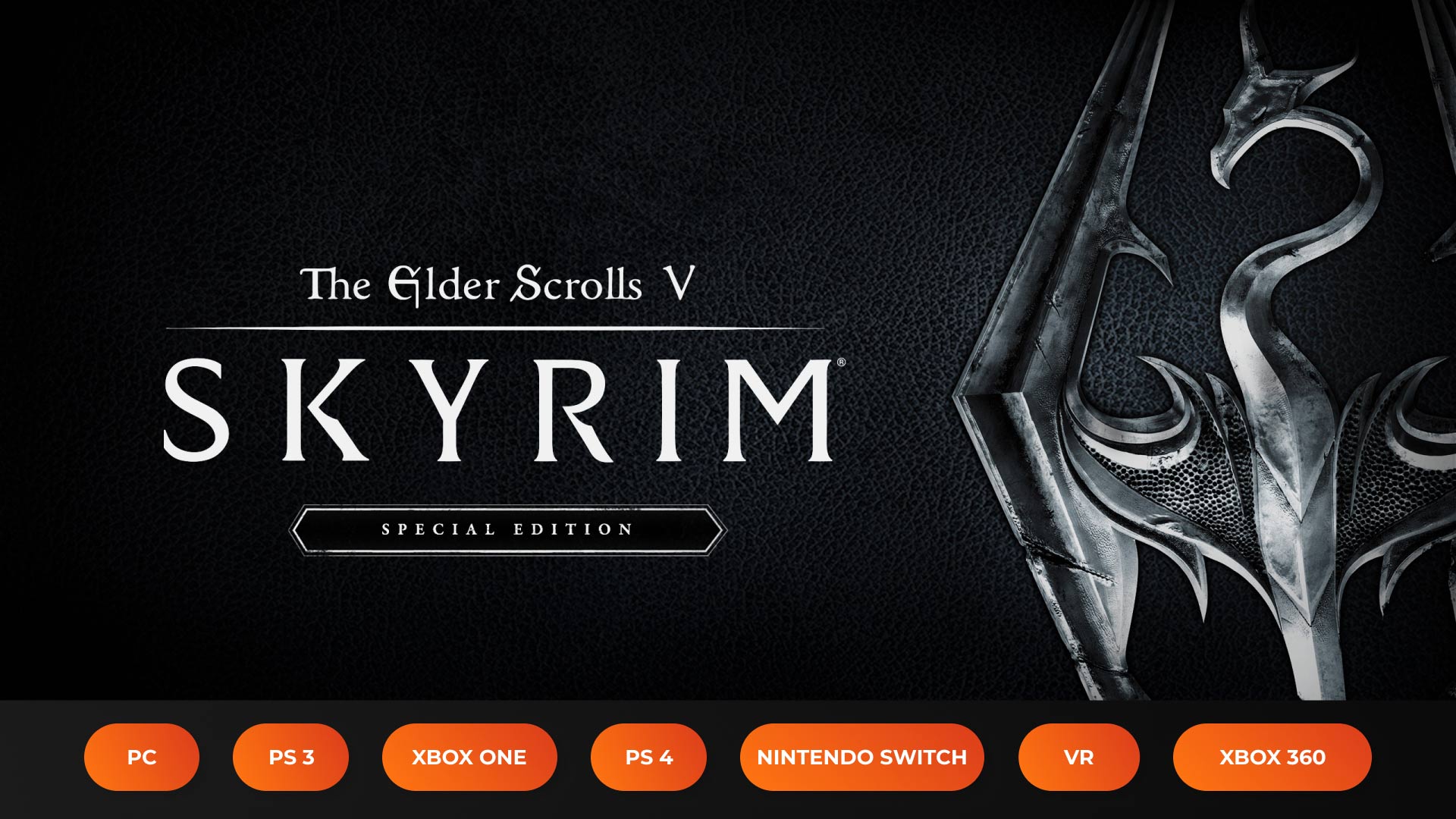
Stardew Valley
Initially launched on PC, this indie farming simulator was also later ported to Xbox, PlayStation, and Nintendo Switch.
The developer, ConcernedApe, worked closely with experienced porting teams to adapt the controls and UI for consoles, making it a seamless experience for players.
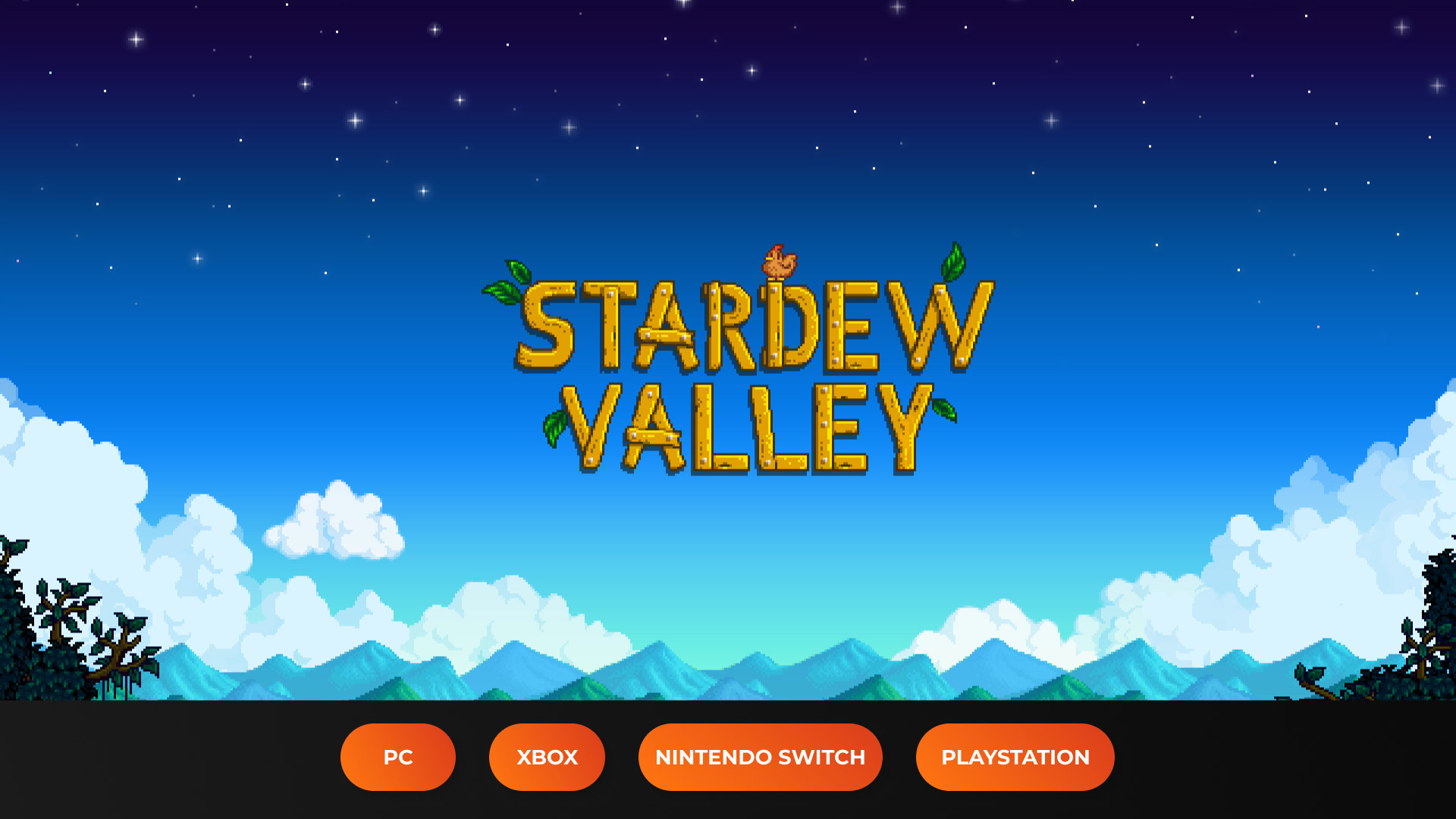
Cuphead
Originally a Microsoft exclusive, Cuphead was eventually ported to Nintendo Switch and PlayStation 4.
The porting teams kept the challenging run-and-gun gameplay consistent across all platforms while preserving the incredible attention to detail in animation and gameplay the game boasts.
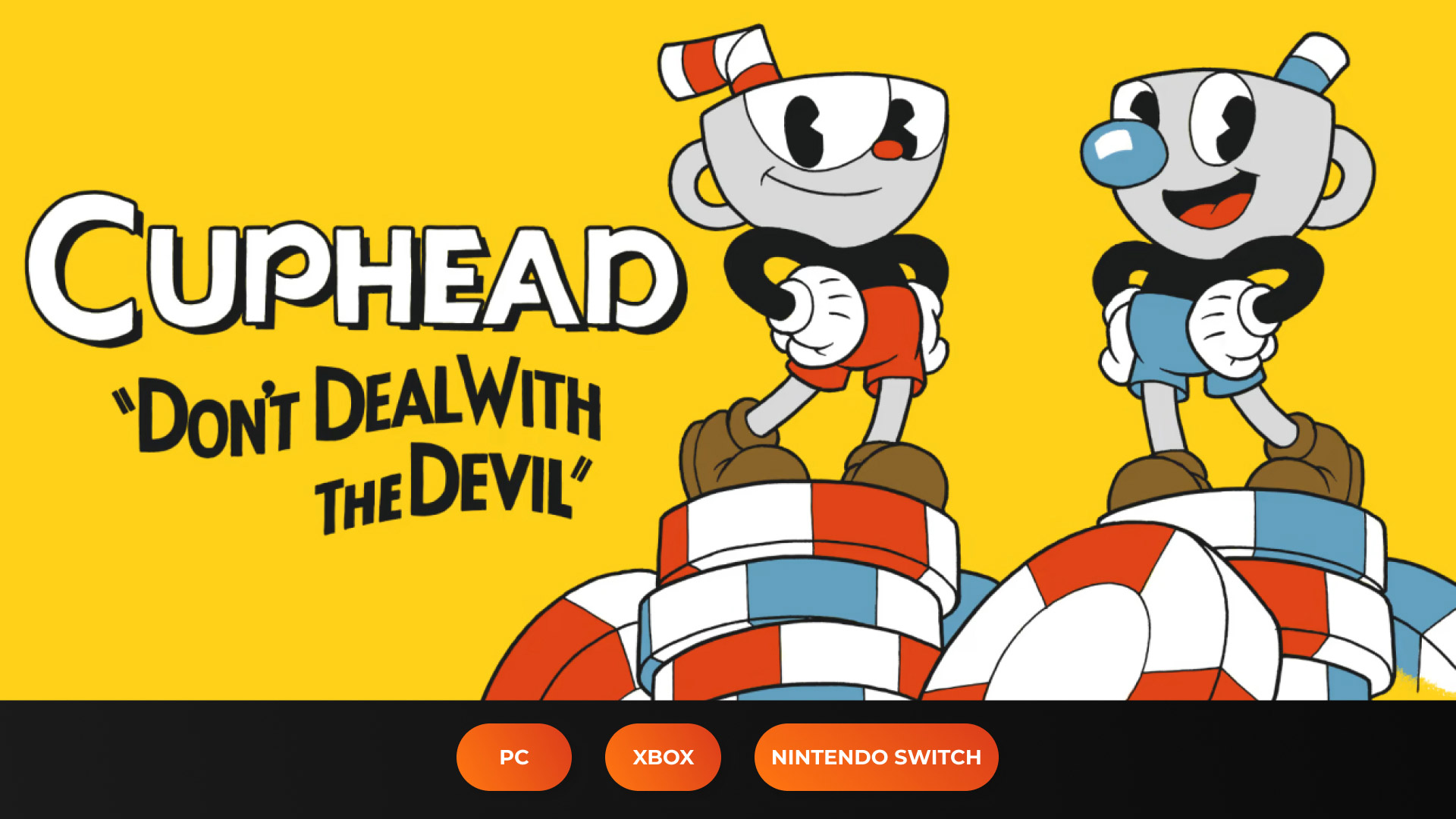
Undertale
Undertale launched as a PC-exclusive indie game but was later successfully ported to consoles like PlayStation and Nintendo Switch.
The game’s creator, Toby Fox, migrated the game’s unique narrative and gameplay elements across platforms, showing how even the simplest game (with enough potential) deserves proper porting.
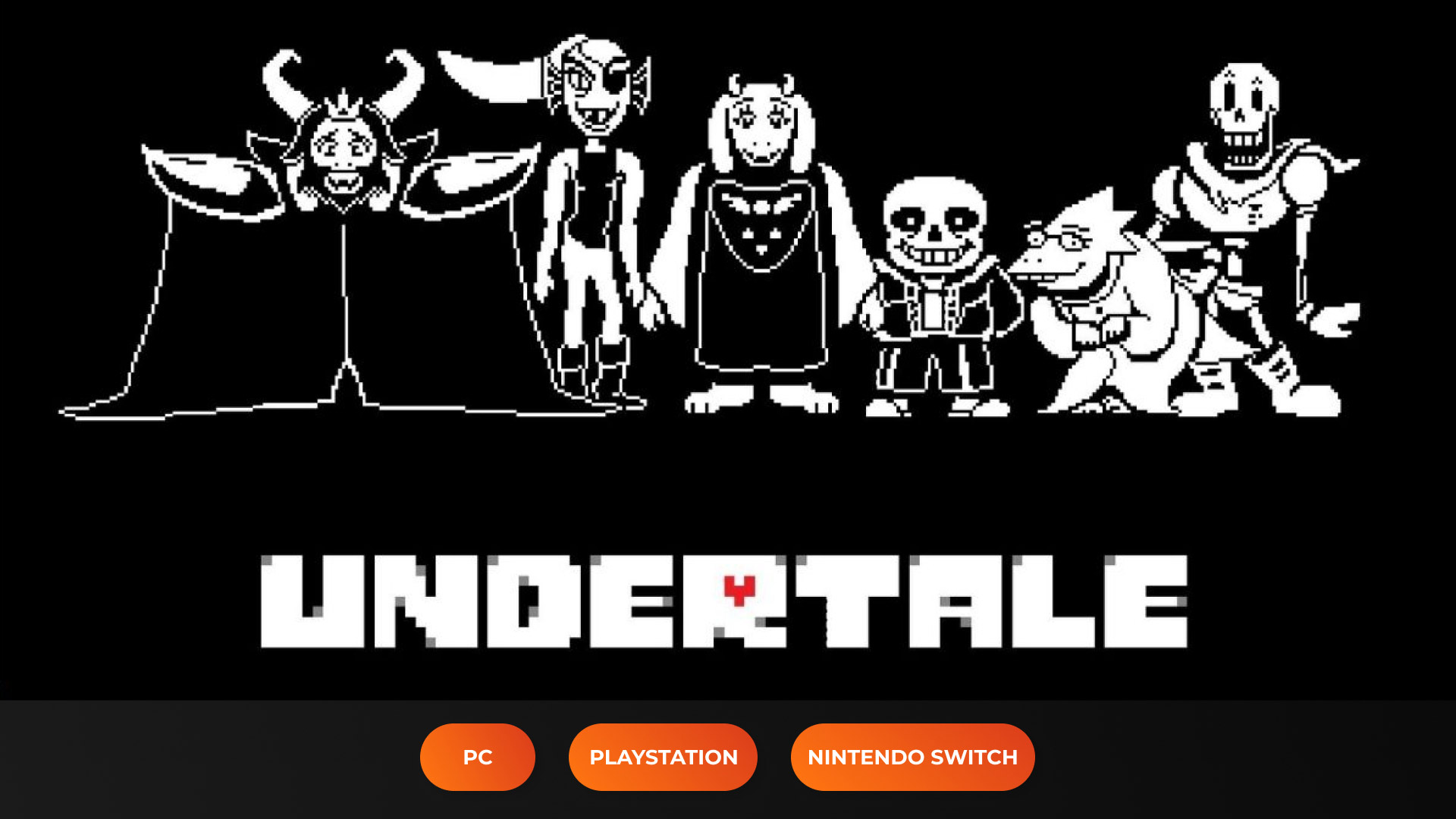
Hades
An offspring of the early access on PC, Hades achieved success and was later ported to Nintendo Switch and other platforms.
The developers at Supergiant Games maintained a strong feedback loop with players during early access, allowing them to fine-tune the game and ensure a smooth transition to other platforms.
These successful game porting cases highlight the importance of optimizing gameplay, controls, and user interfaces for different platforms. They also demonstrate the value of developer-player communication, attention to detail, and maintaining the core essence of the game during the porting process.
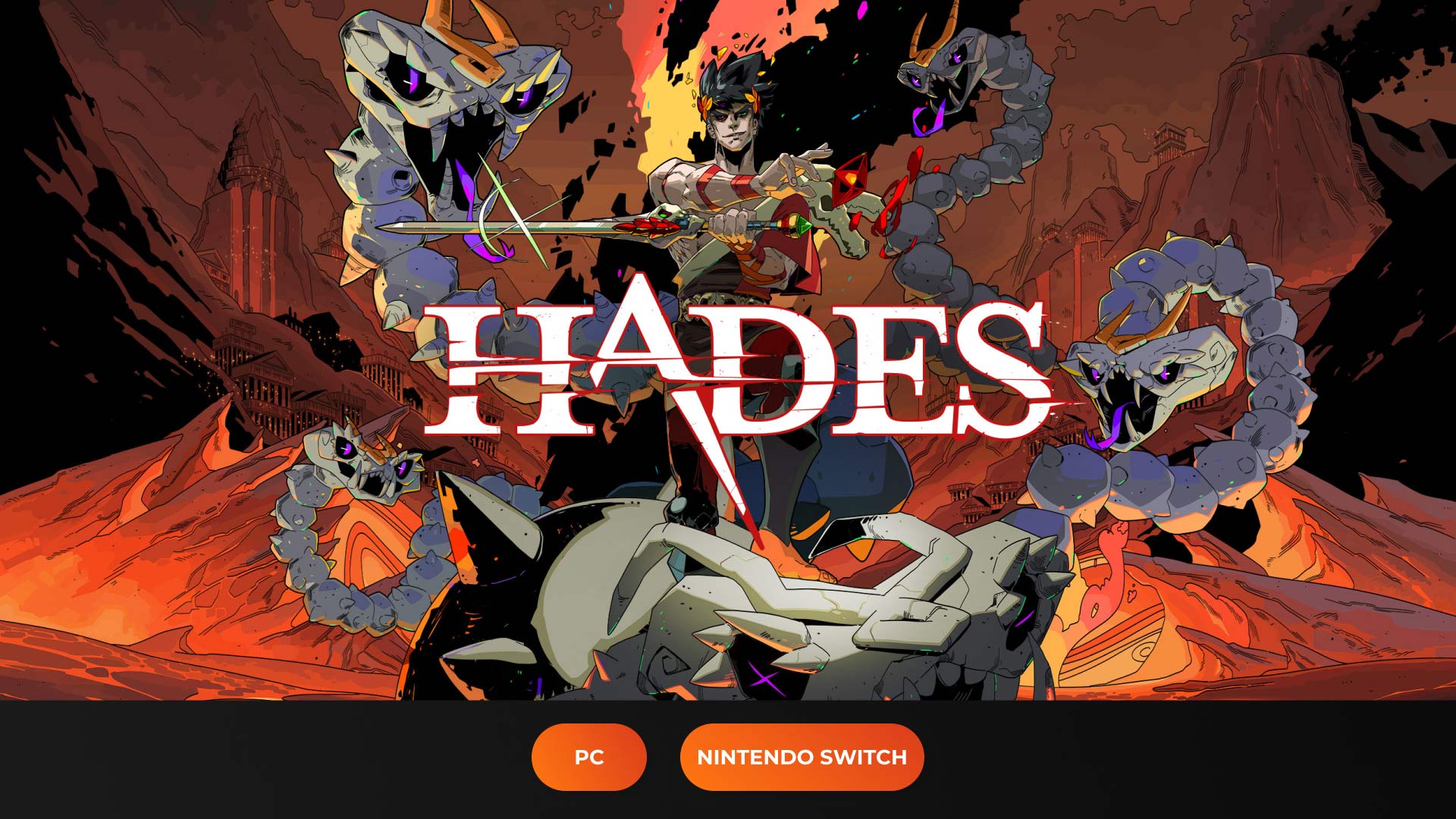
Choosing the Right Company for Porting
Last but not least, an efficient factor for tackling all the challenges is your porting company of choice. Here are some steps to help you choose the right partner:
Check the portfolio
Go through the company’s portfolio and see if they have experience porting games to your platforms of interest. Relying on the professional potential only is not enough.
See client testimonials
Look for client testimonials and reviews to get an idea of the provider’s reputation and reliability. The company’s rates of previous client satisfaction shape its reputability.
Convey your vision
Make sure the company gets your vision and ultimate goals for the porting project. You must remain on one page.
Look for technical expertise
Confirm that the company has the technical expertise needed to handle the complexities of porting (portfolio, certifications, and third-party project reviews).
How Much Does Game Porting Cost?
The cost of porting your game can vary widely, being shaped by factors such as the complexity of the platform, the design of the game, and the technical challenges involved. Just make sure to budget for development, testing, and potential post-launch updates from the get-go. All the rest must be handled by your trusty software porting partner.
Use the Powers of Stepico for Your Game Porting
Stepico offers over nine years of game development experience, putting the relevant expertise and in-depth knowledge of 200+ gaming specialists at the heart of your creations. We handle porting project planning, game porting itself, and all underlying optimizations, no matter the scope and complexity of your video game.
The game porting team at Stepico is your one-stop provider, trusted by Dreamworks, Outplay Entertainment, Universal Studios, and more. Let’s port your next big thing together.
Bottom Line
Porting a game is an effort-intensive, time-consuming process that requires the right expertise, proper tools, and loads of reliable experience. The overall complexity here is dictated by the clarity of code and the general structure of the game software to be migrated. But the coverage and long-term value you achieve as a result is more than worth it. Just make sure to collaborate with true professionals.
Contact Stepico to get a rough estimate of your porting budget, consult, and get all the game porting services you might need in one place.
